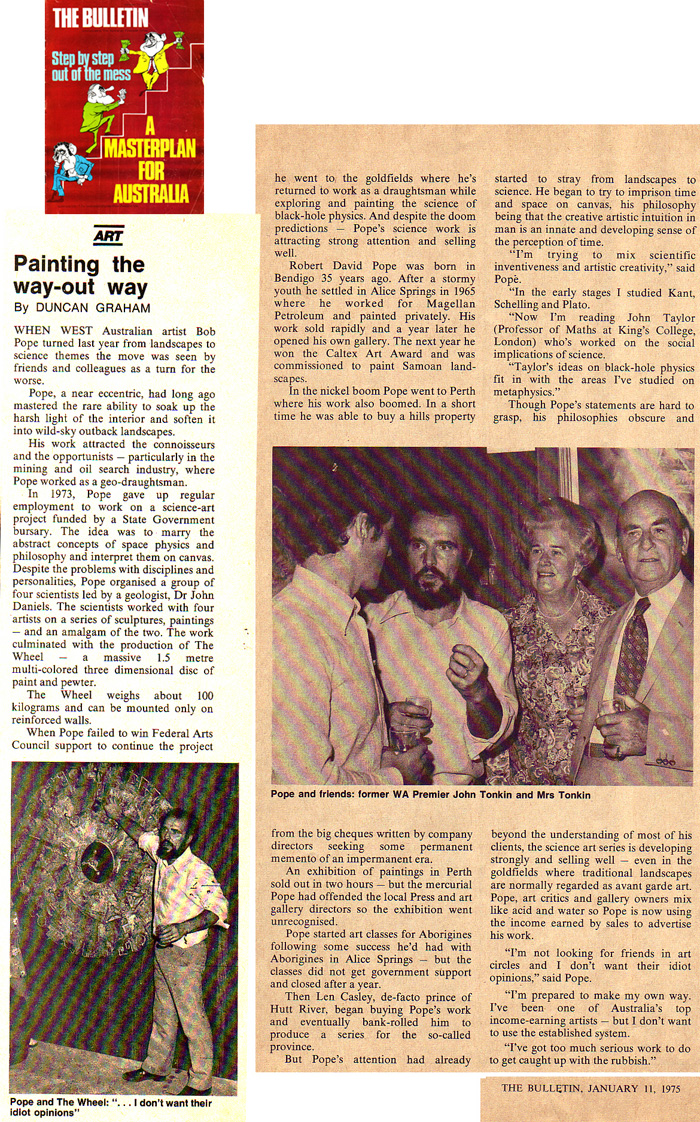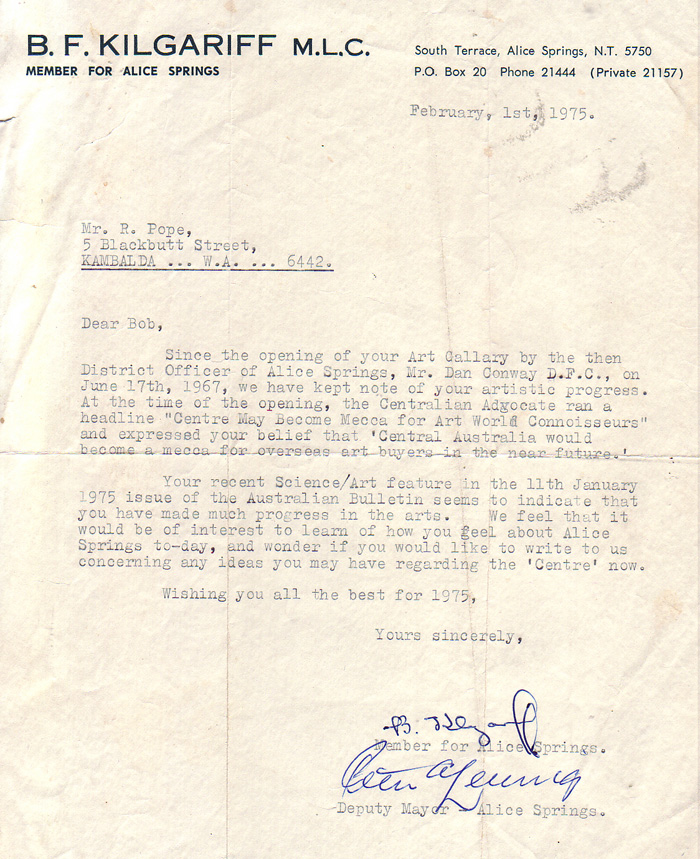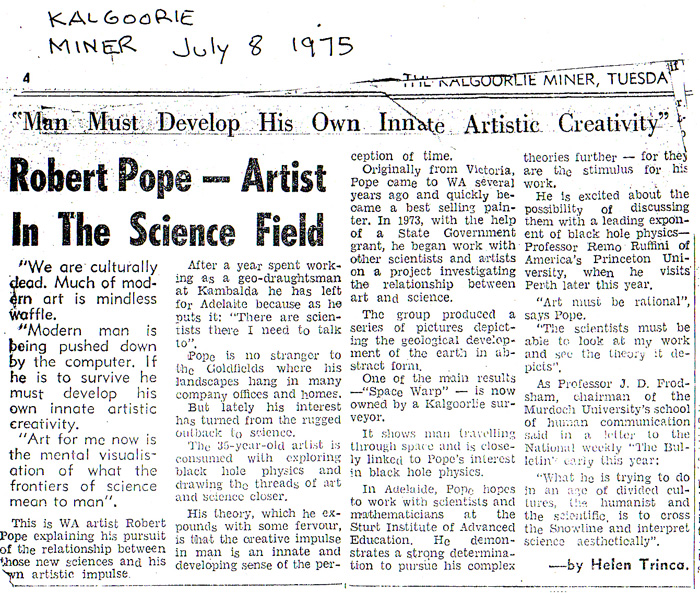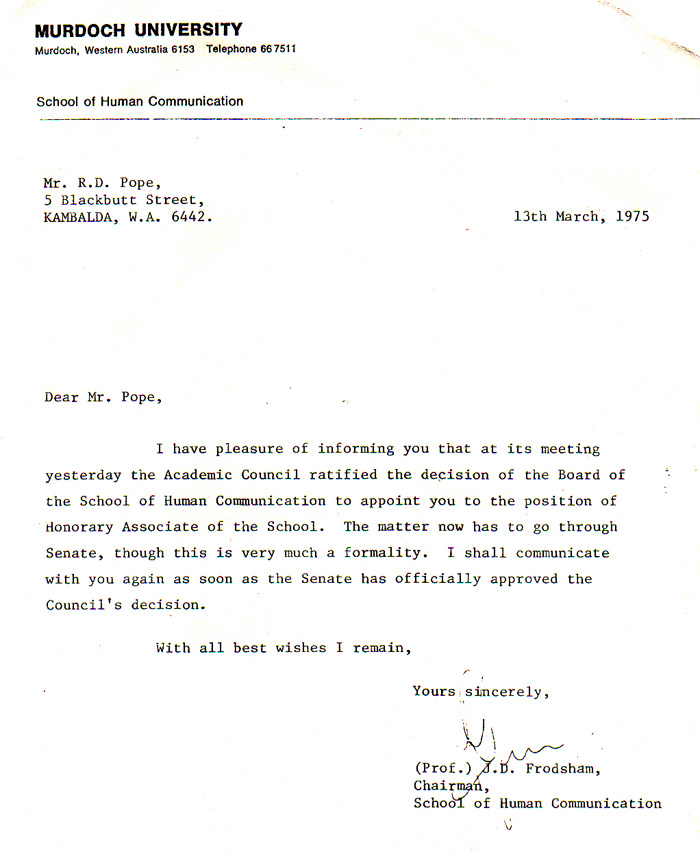The Science-Art Centre
Initiating the 21st Century Renaissance
1975

"Pope started art classes for Aborigines following some success he'd had with Aborigines in Alice Springs - but the classes did not get government support and closed after a year." Pope was so engrossed in linking the above mentioned studies into Kant, Schelling and Plato, with the Indigenous Australian artistic culture that he moved to Western Australia and at his own expense established his school to research the intuitive artistic differences between the Aboriginal survival science and Western science's continual entropic logic warfare.

It is interesting to note an extract below, written by the Chairman of the Murdoch University's School of Human Communication, Professor John Frodsham, which reads: "What he is trying to do in an age of divided cultures, the humanist and the scientific, is to cross the Snowline and interpret science aesthetically."
During the 21st Century, Pope pointed out that linking science with aesthetics belonged to a tribal mentality governed by the Second Law of Thermodynamics. C P Snow, in his famous 1959 Rede Lecture, regarding the cultures of science and art, wrote that our understanding of the Second Law of Thermodynamics was an expression of the "incredulity at the illiteracy of scientists". He wrote about the Second Law, "So the great edifice of modern physics goes up, and the majority of the cleverest people in the western world have about as much insight into it as their neolithic ancestors would have had."
Pope's argument that the creative impulse in man is an innate and developing sense perception of time, derived from Plato's mathematics, was much later understood as being about the evolution of an asymmetrical electromagnetic field within the creative artistic mind.
In 1973, as the Director of the WA Academy of Arts - Environmental Division, he was awarded a Bursary to research his conviction that the engineer, Buckminster Fuller, had plagiarised Plato's mathematics in order to derive his synergistic theory of the universe, within his book, Utopia or Oblivion.
Note: Professor Amy Edmonson, in her 1987 book (digitised and placed online in 1998), A Fuller Explanation, Chapter 4, Tools of the Trade - Plato's Discovery, gently chastised Fuller for plagiarising the mathematics of Plato, completely vindicating the veracity of Pope's Bursary.


Bureaucratic opposition to this appointment eminent academics was so virulent that the position could not eventuate.